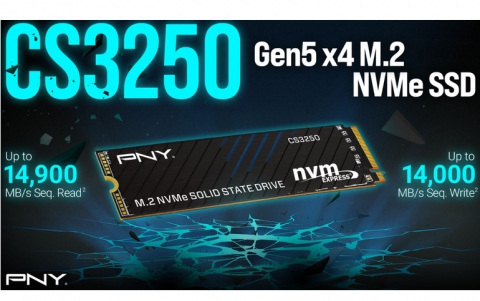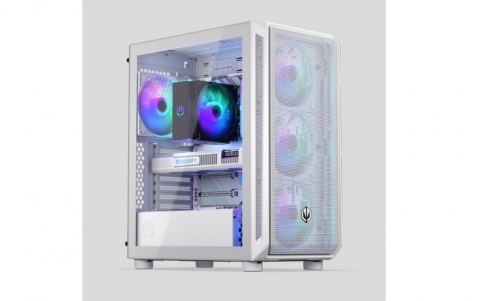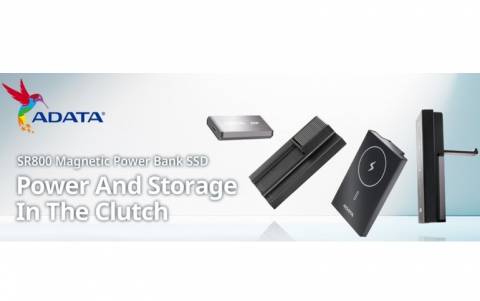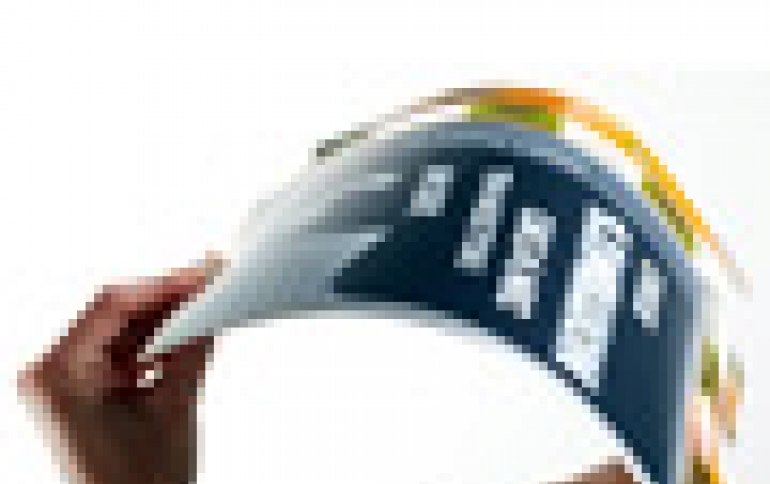
Paper-thin Tablet Showcased At CES
The first flexible computer made of paper has been unveiled at the Consumer Electronics Show in Las Vegas earlier this week.
The device dubbed 'PaperTab,' is a Human Media Lab research project at Queen's University in Kingston, Intel Labs and a Canadian company called Plastic Logic.
The PaperTab tablet looks and feels just like a sheet of paper. However, it is fully interactive with a flexible, high-resolution 10.7" plastic display developed by Plastic Logic, a flexible touchscreen, and powered by the second generation Intel Core i5 Processor. Instead of using several apps or windows on a single display, users have ten or more interactive displays or "PaperTabs": one per app in use.
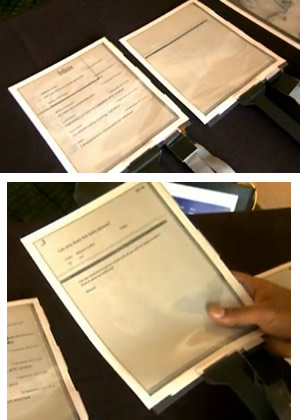 Ryan Brotman, Research Scientist at Intel elaborates "We are actively exploring disruptive user experiences. The 'PaperTab' project, developed by the Human Media Lab at Queen's University and Plastic Logic, demonstrates innovative interactions powered by Intel Core processors that could potentially delight tablet users in the future."
Ryan Brotman, Research Scientist at Intel elaborates "We are actively exploring disruptive user experiences. The 'PaperTab' project, developed by the Human Media Lab at Queen's University and Plastic Logic, demonstrates innovative interactions powered by Intel Core processors that could potentially delight tablet users in the future."
"Using several PaperTabs makes it much easier to work with multiple documents," says Roel Vertegaal, Director of Queen's University's Human Media Lab. "Within five to ten years, most computers, from ultra-notebooks to tablets, will look and feel just like these sheets of printed color paper."
For example, PaperTab's interface allows a user to send a photo simply by tapping one PaperTab showing a draft email with another PaperTab showing the photo. The photo is then automatically attached to the draft email. The email is sent either by placing the PaperTab in an out tray, or by bending the top corner of the display. Similarly, a larger drawing or display surface is created simply by placing two or more PaperTabs side by side. PaperTab thus emulates the natural handling of multiple sheets of paper by combining thin-film display, thin-film input and computing technologies through intuitive interaction design.
PaperTab can file and display thousands of paper documents, replacing the need for a computer monitor and stacks of papers or printouts.
PaperTabs are lightweight so they can easily be tossed around on a desk while providing a magazine-like reading experience. By bending one side of the display, users can also navigate through pages like a magazine, without needing to press a button.
The flexible plastic displays from Plastic Logic are not only thin, light and robust but they can also be post-processed, allowing integration and embedding in non-flat surfaces.
Steve Marsh, Vice President Sales elaborates: "Plastic Logic's revolutionary flexible plastic displays enable innovative design approaches, which were previously impossible when using standard glass-based display technology. These recent concept designs are a great way to open up designers' imaginations, which are currently the only limiting factor to the creative applications possible. We are currently working with system and brand companies to enable them to take products using our flexible, plastic displays to market".
The PaperTab tablet looks and feels just like a sheet of paper. However, it is fully interactive with a flexible, high-resolution 10.7" plastic display developed by Plastic Logic, a flexible touchscreen, and powered by the second generation Intel Core i5 Processor. Instead of using several apps or windows on a single display, users have ten or more interactive displays or "PaperTabs": one per app in use.
 Ryan Brotman, Research Scientist at Intel elaborates "We are actively exploring disruptive user experiences. The 'PaperTab' project, developed by the Human Media Lab at Queen's University and Plastic Logic, demonstrates innovative interactions powered by Intel Core processors that could potentially delight tablet users in the future."
Ryan Brotman, Research Scientist at Intel elaborates "We are actively exploring disruptive user experiences. The 'PaperTab' project, developed by the Human Media Lab at Queen's University and Plastic Logic, demonstrates innovative interactions powered by Intel Core processors that could potentially delight tablet users in the future."
"Using several PaperTabs makes it much easier to work with multiple documents," says Roel Vertegaal, Director of Queen's University's Human Media Lab. "Within five to ten years, most computers, from ultra-notebooks to tablets, will look and feel just like these sheets of printed color paper."
For example, PaperTab's interface allows a user to send a photo simply by tapping one PaperTab showing a draft email with another PaperTab showing the photo. The photo is then automatically attached to the draft email. The email is sent either by placing the PaperTab in an out tray, or by bending the top corner of the display. Similarly, a larger drawing or display surface is created simply by placing two or more PaperTabs side by side. PaperTab thus emulates the natural handling of multiple sheets of paper by combining thin-film display, thin-film input and computing technologies through intuitive interaction design.
PaperTab can file and display thousands of paper documents, replacing the need for a computer monitor and stacks of papers or printouts.
PaperTabs are lightweight so they can easily be tossed around on a desk while providing a magazine-like reading experience. By bending one side of the display, users can also navigate through pages like a magazine, without needing to press a button.
The flexible plastic displays from Plastic Logic are not only thin, light and robust but they can also be post-processed, allowing integration and embedding in non-flat surfaces.
Steve Marsh, Vice President Sales elaborates: "Plastic Logic's revolutionary flexible plastic displays enable innovative design approaches, which were previously impossible when using standard glass-based display technology. These recent concept designs are a great way to open up designers' imaginations, which are currently the only limiting factor to the creative applications possible. We are currently working with system and brand companies to enable them to take products using our flexible, plastic displays to market".









